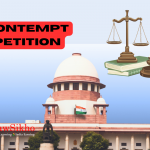In this second part of our two-article series, I continue exploring the process of conducting legal due diligence for private company acquisitions. While Part 1 covered corporate structure and operations, this article delves into regulatory compliance, asset verification and risk assessment. This comprehensive guide will help legal professionals identify and address potential risks that could otherwise derail transactions.
Table of Contents
Introduction
Welcome back to our comprehensive guide on legal due diligence for private company acquisitions.
In Part 1, we covered the corporate structure and commercial operations of Skyline Developers. We introduced our case study of Urban Heights Ltd. seeking to acquire Skyline Developers Pvt. Ltd., a mid-sized real estate firm specialising in affordable townships.
Now in Part 2, we will delve deeper into compliance with regulations, asset validation, and potential legal and financial risks, particularly in the real estate sector.
We will examine land title issues, regulatory compliance, litigation risks, tax matters, and intellectual property concerns.
These areas often harbor hidden liabilities that, if overlooked, can significantly impact the success of your transaction.
Just as we did in Part 1, we will provide practical insights, potential red flags, and actionable solutions for each critical area of examination.
Let’s continue with our comprehensive checklist, focusing on the specialized areas that demand careful scrutiny.
Land title and property documents
This is absolutely critical for a real estate company like Skyline.
I cannot stress this enough: I have seen more deals collapse over title issues than anything else.
Always conduct a full 30-year title search on each property. In the Greenfield Township matter, we discovered a property that had been acquired through a chain of six transactions, and the third one had fraudulent signatures that invalidated everything after it.
Do not just rely on what they give you – visit the land offices yourself.
Check encumbrance certificates personally. I make it a point to physically inspect properties and match boundaries with the documents. Trust me, the extra legwork pays off.
In the Southern Heights case, we found that a portion of land was actually government property that had never been properly conveyed, despite appearing in the company’s records as a fully owned asset.
| Documents to examine | Potential red flags | Possible solutions |
| Title Deeds and Ownership Documents | • Missing or incomplete title documents • Deeds not properly registered or stamped • Conditional clauses that could revert ownership • Gaps in ownership documentation | • Obtain a complete set of missing documents • Complete proper registration and pay stamp duty with penalties (Section 17, Registration Act, 1908) • Negotiate the removal of problematic conditions • Consider title insurance where available • Structure deal with a significant portion of payment in escrow |
| 30-Year Title Search | • Broken chain of title in the past 30 years • Undisclosed legal heirs with potential claims • Missing link documents in the chain • Land ceiling violations without proper permissions | • Obtain affidavits from previous owners • Secure no-objection certificates from potential claimants • Execute deed of confirmation from previous owners • Retroactively secure permissions where possible • Secure specific indemnity for title defects |
| Encumbrance Certificate (EC) | • ECs showing mortgages not disclosed • Undisclosed easements or leases • Court attachments or pending litigation • Recent encumbrances created before sale | • Obtain loan satisfaction documents • Secure the release of mortgages before closing • Resolve pending litigation • Carve out problematic properties from the deal • Set up specific indemnity with escrow mechanism |
| Government Land & Acquisition | • Restrictions on transfer of government allocated land • Consent required for change in control not obtained • Overdue lease rent on leasehold property • Unfulfilled project completion obligations | • Apply for permission from relevant authority • Clear all dues and obtain a no-dues certificate • Fulfill pending obligations before closing • Make closing conditional on government approvals (Section 108, Transfer of Property Act for leasehold property) • Carve out such properties if approvals unlikely |
| Land Use and Conversion | • Agricultural land not converted to non-agricultural use • Actual land use differs from permitted use • Missing Change of Land Use (CLU) permissions • Violations of master plan or zoning regulations | • Apply for NA (Non-Agricultural) Order • Secure CLU permission before closing •Apply for regularisation where possible • Adjust purchase price for properties with use restrictions • Create escrow for costs of obtaining proper permissions |
| Possession and Site Details | • Physical encroachments on the land • Adverse possession claims by third parties • Boundary disputes with neighbors • Portion of land under government acquisition | • Conduct a detailed site survey to identify issues • Negotiate the removal of encroachments • Settle boundary disputes before closing • Adjust the price for land under acquisition or dispute • Exclude disputed portions from the transaction |
| Mortgages & Charges | • Undisclosed mortgages on properties • Multiple charges on the same property • Outstanding loans secured by the company’s real estate • Charge holders refusing to provide NOC | • Obtain detailed loan statements • Pay off loans to release properties (Section 60, Transfer of Property Act, 1882) • Negotiate with lenders for transfer of loans • Make closing conditional on release of charges • Create escrow for loan settlement |
| Joint Development Agreements (JDAs) | • JDA terms breached by Skyline • Profit/area sharing obligations not fulfilled • Change in control requires landowner consent • Landowner disputes over JDA implementation | • Cure breaches before closing (Section 37, Contract Act, 1872) • Secure consent from JDA partners • Renegotiate problematic JDA terms • Set aside funds for pending JDA obligations • Include the landowner in closing discussions |
| Zoning and Building Norms | • Violations of approved building plans • Exceeding FSI (Floor Space Index) limits • Setback or height restriction violations • Construction without proper approvals | • Apply for revised approvals or compounding • Pay regularization fees where allowed •Modify structures to comply with norms • Secure indemnity for penalties or demolition risks • Create a reserve fund for potential regularisation costs |
Environmental law compliance
I have seen environmental non-compliance halting the operations of the target company entirely.
In one deal, our client had to spend an additional ₹3 crore post-acquisition to address violations missed during diligence. Always verify EIA clearances, Pollution Control Board consents, and half-yearly compliance reports.
Physical site visits are crucial to identify gaps between documentation and reality. Projects near eco-sensitive zones require specialised clearances- the Green Valley project was stalled for two years because it was within 5km of a protected forest.
| Documents to examine | Potential red flags | Possible solutions |
| Environmental Clearances | • Townships built without required Environmental Clearance (EC) under the Environmental Protection Act, 1986 • EC conditions not implemented on the ground as per Environment Impact Assessment Notification, 2006 • Modifications to projects without EC amendment • Projects in eco-sensitive zones without special permissions under the Wildlife Protection Act, 1972, or Forest Conservation Act, 1980 • EC validity expired without renewal | • Apply for post-facto clearance where possible under section 3, Environment Protection Act, 1986) • Implement pending EC conditions immediately as required by the EIA Notification, 2006 • Apply for EC amendments for modifications • Engage environmental consultants to address gaps • Create an environmental compliance program • Consider carve-out of projects with severe issues |
| Pollution Control Consents | • Missing Consent to establish (CTE) for projects • Operating without Consent to Operate (CTO) • Show-cause notices from the Pollution Control Board • Non-compliance with consent conditions • DG sets or STPs running without valid consents | • Apply for consents where missing under section 25, Water Act, 1974 and section 21, Air Act, 1981 • Respond to show-cause notices with an action plan• Implement consent conditions immediately • Upgrade pollution control infrastructure • Create reserve for penalties or retrofitting • Engage environmental compliance consultant |
| Waste Management | • Improper solid waste management • Hazardous waste authorisation missing • Construction & demolition waste non-compliance • Biomedical waste (if applicable) violations • E-waste disposal issues | • Set up proper waste management systems • Apply for hazardous waste authorization under Hazardous Waste Rules, 2016 • Comply with C&D waste management rules • Establish segregation and disposal processes • Engage authorised waste handlers • Train staff on waste management |
Licenses, approvals, and regulatory compliance
Real estate is a regulatory minefield, and this section can make or break your client’s investment.
I will never forget a deal where everything looked perfect until we discovered their environmental clearance had expired two years prior, and they had been operating without it.
Check RERA registrations, building plan sanctions, and occupancy certificates with a microscope in hand.
I learned the hard way that some developers get “provisional” approvals and then never complete the final requirements. Make sure you understand the difference between “partial” and “final” completion certificates – they’re not the same!
Also, verify if approvals are transferable after a change in control — a lot of deals fell apart because a key tourism license couldn’t transfer with the change in ownership.
| Documents to examine | Potential red flags | Possible solutions |
| Real Estate Regulatory Authority (RERA) | • Missing RERA registration for ongoing projects • Inaccurate project details filed with RERA • Pending RERA orders or penalties • Non-compliance with quarterly update requirements • Failure to maintain a separate bank account for the project | • Apply for registration immediately if missing under section 3, RERA Act, 2016 • Update project details with correct information • Pay pending penalties before closing • Create escrow for potential RERA liabilities • Establish a compliance mechanism for future updates • Open project-specific accounts where missing under section 4, RERA Act, 2016 |
| Building Plan Approvals | • Construction deviating from sanctioned plans • Building without approved plans • Expired permits not renewed • Revisions to plans without approval • Different plans shown to different authorities | • Apply for revised plan approval • Halt unauthorised construction • Pay compounding fees where possible • Make structural modifications to comply with plans • Create a fund for potential penalties or remediation |
| Commencement & Occupancy Certificates | • Construction began without Commencement Certificate • Buildings occupied without Occupancy Certificate • Expired certificates not renewed • Conditions of certificates not fulfilled • Partial OC with areas still pending approval | • Apply for retrospective CC where possible • Accelerate OC application process • Fulfill pending conditions to obtain certificates • Disclose risks to buyers of units without OC • Create reserve for penalties or compliance costs |
| Fire and Safety Approvals | • Missing fire NOC for multi-story buildings • Inadequate fire safety installations • Lift safety certificates • Non-compliance with safety regulations • Fire exits or equipment not as per approved plans | • Apply for NOCs where missing • Upgrade fire safety infrastructure • Renew all safety certificates • Install required safety equipment • Train staff on safety protocols • Create reserve for safety upgrades |
| Labor & Construction Licenses | • Non-registration under the Building and Other Construction Workers Act, 1996 (‘BOCW’) • Unpaid BOCW cess • Missing contractor licenses • Labor law violations at construction site s• Inadequate worker safety provisions | • Register under BOCW immediately (Section 7, BOCW Act, 1996) • Pay outstanding cess with interest under section 3, BOCW Cess Act, 1996 • Obtain required licenses • Implement labor compliance mechanisms • Create a fund for potential labor claims • Establish proper worker safety protocols |
Litigation and legal proceedings
Trust me, you need to go beyond what the target company discloses here.
I always check court websites directly for the company and all director names. My experience taught me to also check for litigation against subsidiary or associate entities. I remember in one deal – we found dozens of consumer complaints against a marketing company that was effectively a shell for the developer.
Focus on title disputes and customer complaints – these are the landmines.
I also check RERA authorities’ websites for complaints and orders.
Remember that case where we discovered the seller had settled with homebuyers by promising units in a completely different project? The liability wasn’t on their books, but it would have become our client’s problem.
Also, check for proceedings under section 7/9 of the IBC – even withdrawn applications can reveal financial stress.
| Documents to examine | Potential red flags | Possible solutions |
| Litigation Summary | • A large number of pending cases against the company • High-value claims significantly exceeding provisions • Litigation not properly disclosed during negotiations • Pattern of similar complaints indicating systemic issues • Cases involving fraud or serious misconduct | • Create a comprehensive litigation tracker • Assess financial impact of potential judgments • Increase price discount to cover litigation risk • Consider deal-breaker threshold for litigation value • Enhance representations and warranties • Structure significant escrow for litigation risks |
| Title Disputes or Land Litigation | • Core project lands are under ownership dispute • Suits from prior owners/heirs claiming title • Government acquisition proceedings affecting property • Injunctions preventing development of land • Boundary disputes affecting usable area | • Evaluate the likelihood of adverse outcomes with counsel • Consider title insurance where available • Exclude disputed properties from transaction • Create specific escrow for affected properties • Obtain enhanced title indemnities • Consider closing in phases after resolution |
| Customer Litigation (RERA/Consumer) | • Multiple delay-related complaints by homebuyers • RERA orders directing refunds not complied with • Consumer court judgments for fraud/misrepresentation • Class action suits by customer associations • Pattern of quality-related complaints | • Quantify total potential refund liability • Develop a strategy to address delay complaints • Create customer satisfaction resolution program • Set aside funds for potential refunds/compensation under section 19, RERA Act for buyer rights • Assess reputation damage and remediation costs • Increase quality control for ongoing projects |
| Contractor/Supplier Disputes | • Multiple payment disputes with contractors • Claims for wrongful termination of contracts • Litigation over quality of work or materials • Mechanic’s liens filed against properties • Arbitration proceedings with major contractors | • Review contractor agreements for breach terms • Settle legitimate contractor claims pre-closing • Create reserve for disputed amounts • Obtain releases from contractors where possible under section 63, Contract Act for release and discharge • Establish an improved vendor management system • Include specific contractor dispute indemnity |
| Employment Disputes | • Wrongful termination lawsuits by former employees • Labour court proceedings for statutory violations • Senior management in litigation with company • Pattern of harassment or discrimination claims • PF/ESI non-compliance proceedings | • Assess potential liability for each claim • Settle meritorious cases before closing • Address systemic HR issues identified • Create a reserve for employment liabilities • Improve HR policies and compliance under section 33, Industrial Disputes Act • Secure specific employment claims indemnity |
| Tax & Regulatory Proceedings | • High-value income tax or GST disputes • Proceedings by Competition Commission or SEBI • FEMA violations or ED investigations • Property tax disputes for multiple properties • Pattern of aggressive tax positions | • Obtain tax counsel opinion on likely outcomes • Consider advance tax rulings where possible • Create tax liability reserve based on assessment • Structure-specific tax indemnity with no cap • Address root causes of recurring tax issues • Consider tax insurance for significant risks |
| Arbitration Matters | • Ongoing arbitration with JV partners or landowners • Unfavorable interim orders in arbitration • Unpaid arbitration awards against the company • Challenges to arbitral jurisdiction by counterparties • Arbitration agreements with unfavorable terms | • Assess the likelihood of success in each case • Quantify potential arbitration liabilities • Consider settlement of problematic arbitrations • Create reserve for potential awards • Ensure proper legal representation in proceedings under section 34, Arbitration Act for challenging awards • Structure-specific arbitration indemnity |
| Insolvency or Bankruptcy | • Insolvency proceedings initiated against the company • Section 7/9 applications under IBC pending • Company having filed insolvency against key debtors • History of corporate debt restructuring • Assets under moratorium or court restrictions | • Verify if proceedings can be withdrawn under section 12A, IBC • Settle with creditors who filed insolvency • Consider alternative transaction structure • Assess the impact of ongoing CIRP if applicable • Delay closing until resolution of proceedings • Consider asset purchase instead of share purchase |
Taxation and statutory dues
You would not disagree when I say that Tax liabilities can quickly undermine profitability.
Due diligence can reveal improper input tax credits, creating an unforeseeable liability.
Always check for ongoing tax audits and verify property tax and municipal dues, which are often overlooked.
Confirm actual payment receipts for statutory contributions, not just documentation. Create a comprehensive schedule of all statutory payment obligations and verify compliance for at least three years to identify patterns of non-compliance.
| Documents to examine | Potential red flags | Possible solutions |
| Direct Tax (Income Tax) | • Incomplete or unfiled income tax returns • Pending income tax assessments for multiple years • Significant tax demands or notices outstanding • Aggressive tax positions taken in past returns • TDS non-compliance or significant defaults | • File all pending returns immediately • Assess the merit of pending tax demands • Create reserve for probable tax liabilities • Pay outstanding TDS with interest under section 201, Income Tax Act • Structure-specific tax indemnity with no cap • Consider tax insurance for major risks |
| Indirect Tax | • GST registration issues or non-compliance • Discrepancies between GSTR-1 and GSTR-3B returns • Incorrect GST credit availment • Pre-GST era service tax/VAT disputes • Show-cause notices for GST non-compliance | • Regularise GST registration issues • Reconcile and correct GST return discrepancies • Pay tax on any incorrect credit with interest under section 50, CGST Act • Assess and provide for VAT/Service Tax disputes • Respond to pending show-cause notices • Create specific GST indemnity in SPA |
| Local Taxes and Cess | • Unpaid property tax on land/buildings • Outstanding development or betterment charges • Unpaid local cess (irrigation, fire, etc.) • Building tax arrears on completed projects • Labour welfare cess (BOCW) not paid | • Clear all property tax arrears before closing • Pay outstanding development charges • Obtain no-dues certificates for all properties • Pay BOCW cess with applicable interest • Create property tax compliance system • Include specific indemnity for undisclosed local taxes |
| GST on Real Estate (Specific) | • Incorrect GST rates applied to real estate sales• Input tax credit transition issues during GST rollout • GST refunds due but not claimed or under examination • Anti-profiteering issues (failure to pass input credit benefit) • GST compliance for ongoing construction projects | • Review GST treatment of all projects • Claim eligible refunds and follow up • Address anti-profiteering concerns proactively under Section 171, CGST Act • Ensure proper GST treatment for ongoing projects • Create GST compliance framework post-closing • Structure-specific indemnity for GST issues |
| Pending Refunds or Credits | • Significant tax refunds pending for long periods • GST input credits accumulated but not utilised • Refund claims stuck in litigation • Refunds are at risk due to other tax issues • Credits may expire if not utilised | • Quantify all pending refunds and credits • Follow up on long-pending refund claims • Develop a strategy for utilising accumulated credits • Assess the probability of receiving disputed refunds • Create an action plan for post-closing refund pursuit • Consider refund value in transaction pricing |
Intellectual property
It might seem secondary for real estate, but IP can cause significant issues.
I remember a target using a trademarked project name without permission and facing an injunction right after the acquisition.
So, verify trademarks for company and project names, and confirm architectural designs are properly licensed – architects sometimes retain rights to designs, preventing modifications. Also, confirm ownership of digital assets – in the Silverline case, the company’s domain was registered to their web developer personally, who tried to hold it hostage during the transition.
| Documents to examine | Potential red flags | Possible solutions |
| Trademarks | • Key brand names or logos not registered • Trademark applications still pending or opposed • Trademarks registered in individual names, not company • Similar trademarks registered by competitors • Trademark registrations about to expire | • File applications for unregistered marks immediately • Follow up on pending applications • Execute assignment of personally held trademarks under section 37, Trademarks Act • Conduct trademark search for potential conflicts • Renew soon-to-expire registrations • Create a trademark management system |
| Domain Names | • Important domains registered to individuals, not companies • Key domains expiring soon or not renewed • Cybersquatting on similar domain names • Website domain control in the hands of a third-party vendor • Missing domains for key project names | • Transfer personally registered domains to the company • Renew all business-critical domains • Consider acquiring similar/defensive domains • Secure admin control of all domain registrations • Register domains for all major projects • Implement domain management system |
| Copyrights | • Marketing materials or brochures without proper rights • Architectural drawings with unclear ownership • Custom software without proper assignment of rights • Database rights not secured for customer information • Third-party content used without permission | • Document ownership of all marketing materials • Secure assignment of rights from architects under section 19, Copyright Act 1957 • Ensure all software developers assigned rights • Establish data ownership and protection policies • Audit and secure permissions for third-party content • Create copyright compliance protocol |
| Patents/Designs | • Novel construction methods without patent protection • Design registrations for unique building elements missing • Pending patent/design applications abandoned • Use of patented methods without proper license • Failure to maintain design registrations | • Assess patentability of any novel methods • File design registrations for unique elements • Revive abandoned applications if valuable • Secure proper licenses for patented methods • Renew lapsed design registrations if possible • Create IP protection strategy |
| Third-Party IP Use | • Software used without proper licenses • Unauthorised use of stock images in marketing • Unlicensed technology in building management • Undocumented use of third-party IP • Claims of IP infringement from third parties | • Audit all software for proper licensing • Purchase proper licenses for all images/content • Secure appropriate technology licenses • Document all third-party IP usage • Address any infringement claims • Create third-party IP compliance system |
| Pending IP Litigation | • Trademark disputes with similarly named developers • Copyright claims for architectural or marketing materials • IP indemnification claims from contractors • Cease and desist letters related to IP • Opposition proceedings for trademark applications | • Assess merit and status of all IP litigation • Develop a strategy for resolving disputes • Budget for potential settlements or judgments • Consider rebranding if serious trademark issues • Address cease and desist claims promptly under section 29, Trademarks Act for infringement • Create IP litigation response protocol |
| Post-Closing Integration | • IP held by affiliates or individuals not target company • Brand transition or co-branding requirements • Shared IP with seller’s other businesses • Systems or platforms requiring license transfers • Website and social media account transitions | • Plan comprehensive IP assignment pre-closing • Develop brand transition strategy • Secure clear division of shared IP • Arranged license transfers for all systems • Create a digital assets transition plan • Budget for rebranding if necessary |
Closing thoughts
As I conclude this two-part series on legal due diligence, I hope you gained valuable insights into this critical aspect of M&A transactions.
I have covered everything from foundational corporate structures to specialized regulatory compliance and risk assessment areas.
Remember that due diligence is both an art and a science. It requires: –
- methodical examination,
- skeptical inquiry, and
- practical problem-solving.
For young lawyers looking to enter corporate practice, mastering these skills offers an excellent foundation for building a successful career.
The checklists and frameworks shared across both articles are not just theoretical. They are battle-tested tools from real-world transactions.
Whether you’re conducting due diligence for a real estate company like Skyline Developers or in another industry, the fundamental principles remain the same: be thorough, document everything, and never take representations at face value.
After all, in the world of M&A, the devil truly is in the details.
Frequently asked questions
Does due diligence differ across industries?
Absolutely! Each industry has unique considerations. In tech acquisitions, you’d focus on IP portfolios, source code ownership, and cybersecurity protocols. For pharmaceuticals, regulatory approvals, clinical trial data, and patent lifecycles are critical. Manufacturing requires deeper checks on environmental compliance, equipment safety certifications, and supply chain dependencies. Always tailor your approach to the industry you’re working in.
Are there ethical concerns I should be aware of during due diligence?
Yes, and they’re often overlooked. When you access confidential information, there’s a fine line between thorough investigation and misuse of sensitive data. I’ve seen cases where the acquiring team used the seller’s proprietary information to compete with them after a failed deal. This is why robust NDAs with specific prohibitions are essential. Also, watch for conflicts of interest — ensure your advisors don’t have undisclosed relationships with either party that could compromise their objectivity.
How important is team composition in due diligence?
It’s crucial. A successful due diligence team needs diverse expertise. I’ve found the most effective teams include legal specialists (for different areas like corporate, real estate, and IP), financial experts (beyond just a CA — think tax specialists and valuation experts), operational managers who understand the business, and sometimes industry specialists for technical aspects. Each brings a unique lens, helping identify risks others might miss.
Does due diligence vary across countries?
Significantly. In my experience working on cross-border deals, European jurisdictions often emphasize environmental and labor compliance more stringently than some Asian markets. US transactions typically involve more comprehensive litigation searches and product liability checks. China requires careful examination of government relationships and permits. Always engage local experts who understand jurisdiction-specific issues — a stellar due diligence in India could miss critical factors abroad.
How is technology changing due diligence?
It’s revolutionizing the process. Virtual data rooms have replaced physical war rooms, allowing multiple experts to review documents simultaneously from anywhere. AI tools now scan thousands of contracts to flag unusual clauses in minutes — work that would take a junior lawyer weeks. Blockchain solutions are emerging to verify transaction histories and asset ownership. Despite these advances, I still believe human judgment remains essential — technology supports but doesn’t replace critical thinking in evaluating business risks.






 Allow notifications
Allow notifications
